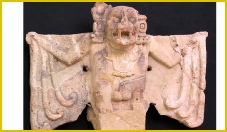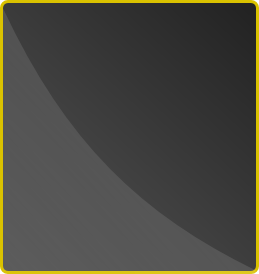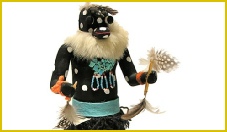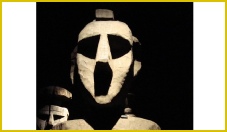












Last Gasps
Paranormal



The South’s science-based team!
Our trained investigators are here to believe you. Most importantly, we are here to solve the problem...no matter what it takes. Our services are always FREE.

© 2023 Last Gasps paranormal. Links | Terms and Conditions







Eastern Demons


Disclaimer: This work has been completed as an educational tool for students of history, religious and paranormal studies. The author wishes to discourage any use of this work in conjunction with paranormal field investigations of demons.
Presented by Kyle T. Cobb, Jr. to the audience of Dragon-Con 2013
Nos tibi credere.
A Literary History
America
While the other demonic traditions that we have looked at were influenced by Buddhism, North and South America were not influenced by either Buddhism or Christianity until 500 years ago. As a result of these cultural absences, it is possible to see demonic variations without the contaminations of over-arching religions.
Today most of the understanding of original Mesoamerican religions is gained from glyphs or by conquers rather than practitioners. Many of the great codices of religious rites written when the Spanish arrived were eventually burned in the name of Christianizing the natives. Yet some of these works have survived. The Popol Vuh is a general mythology of the K'iche' kingdom in Guatemala's western highlands. Thanks to the work of a Dominican friar, the Popul Vuh has survived and now provides one of the only glimpses into the religion of the ancient Mayans. Contrary to the ambitions of the Christian churches, may of the old Gods and spirits have continued to be a real part of indigenous American culture. Even today, it is possible to sit and watch the Maya celebrate the struggle between good and evil as they dance around their sacred altars of flowers and fruit.
A key factor in understanding the Mesoamerican religions is the concept of religious transfer that was mentioned earlier. Given today's perception of relative isolation between cultural groups from South America to the North it is important to understand that for thousands of years trade routes connected the people of both continents. Gods and ideas passed from neighbor to neighbor as well as from coast to coast. For instance, in North America 500 years before Columbus, there was already a trade system that stretched from Tampa to the Great Lakes to the Rocky Mountains. With village and cultural warfare constantly occurring, the Americas supported a tapestry gods that often were the same characters with differing names.
Maya
To the ancient Maya, demons and spirits were very different than how "modern" Americans perceive them today. Generally speaking all demons and gods had an absolutely physical presence. These gods and demons may be hidden in the shadows or take other forms but they had bodies. Yet at the same time, the Maya believed that they could channel or be possessed by the spirits of the gods through the use of ceremonial masks and spells. Because these gods had bodies, they required feeding. The primary gods required blood sacrifices while the lesser gods like the Xibalba were reduced to minor symbolic sacrifices as their prominence waned.
Camazotz
One of the most common of the demons found throughout Mesoamerica with various names is the Camazotz or "death Bat". Associated with the Quiche god of fire, Zotzilaha Chama lean, at least two different forms of the Bat are found in the Popol Vuh. In one chapter the Camazotz decapitates the hero Hun Hunahpu with his claws but was ultimately defeated and cast out from the world. The bat mythos is ingrained in many America religions. For the Bakairi tribe in Brazil, the bat is Evaki, a night goddess. The Muskogee Creek, the Cherokee and the Apache all include some form of bat spirit as part of their mythologies. Interestingly this demon still is considered real by the Zotzil and the Zincanatan people of Mexico as well as in Trinidad and Ecuador.
In a case that may be more Cryptozoology than Demonology, since 1947 there have been reports of giant bats with an unusually bald or misshaped head.
Xibalba
In the Mayan religion, the underworld, Xibalba, the "place of fear" is ruled by two death gods named Hun-Came (One Death) and Vucub-Came (Seven Death). Beneath them 10 demons serve in paired groups:
Xiquiripat (Flying Scab) and Cuchumaquic (Gathered Blood) cause sickness by poisoning peoples' blood.
Ahalpuh (Pus Demon) and Ahalgana (Jaundice Demon) cause swelling in dead bodies to swell as from infection.
Chamiabac (Bone Staff) and Chamiaholom (Skull Staff) represent the natural decomposition of bodies into skeletons.
Ahalmez (Sweepings Demon) and Ahaltocob (Stabbing Demon) are demons that lie in wait in the unswept areas of people houses and stabbed them to death.
Xic (Wing) and Patan (Packstrap) cause people to die coughing up blood especially when while out walking on a road.
Here is a sampling of a few more Mayan demons to give you a feel for how the Maya incorporated these monstrous demons into their religion.
Caprakan Demon spirit of earthquakes, Child of Gucup Cakix and brother of Zipacna. He was defeated by Hunahpu and lxbalanque.
Cotzbalam Demon servitor of Alom, His name means “Crunching Jaguar” and he aided in the destruction of the Second Creation, by devouring the bodies of the Tsaboi-People who inhabited that world.
Xecotcovach Demon-bird servitor of Alom, His name means “Face-Gouger” He aided in the destruction of the Second Creation, by tearing out the eyes of the Tsaboi-People who inhabited that world.
The Muan is a sort of messenger demon that most often takes the form of a screech owl and provides ill omens to any whom encounter it.
While the Mayans provide a great example of the ancient impacts of demons on a society, the current practitioners give a modern demonologists even greater understanding their religious beliefs.
Zuni
Atahsaia
The Zuni of the Southwestern US has a class of giant demons called the Atahsaia. Like the Oni of Japan, this demon hunts to other demons as well as humans for food. This proto-bigfoot monster is said to have a torso as big as an elk, hands so thick that his knuckles appear horned, and a wild mane of grey bison hair. In some versions of the Atahsaia stories, his chest hair is like a porcupine's quills and his arms are protected with scales. All the stories agree that he has unblinking eyes and yellow tusks.
Most of the stories featuring Atahsaia, center on the demons attempting to capture and eat various women that have strayed from their villages. As the demons struggle to "get the girl," usually the twin Zuni gods, Ahayuta and Matsailema, intervene to slay the monster and reward the intended victim. In the modern Zuni religious "wa'templa" ceremonial dance, Atahsaia is used as a figure to frighten children into obedience.
Donning spotted masks with protruding teeth, the monster dances about with a flint knife helping to wipe the earth by allowing dead things to decay.
Shoshonee
Dzoavits
In the Shoshonean religion, an earthquake demon named Dzoavits is believed to feed on children as well as the eggs from the sacred dove. One story tells of how the demon in tricked into chasing the dove into a cave where he becomes trapped. The shaking earth is the demon trying to force his way from the cave.
Mapuche
Wekufe
The Wekufe, from the Mapudungun word “wekufu” meaning "demon, outside being", is an important type of harmful spirit or demon for the South American tribe of the Mapuche in Patagonia. Originally the term was used to describe any person that tells lies or is deceptive. After the arrival of Catholicism, the word was used as their term for demons of any creature that means to harm Mapuche people. The Wekufe can take physical form or move about in spirit form. According to legend, the soulless wekufes entered the world during a battle between the Pillan spirits which shattered the world's harmony. Working in conjunction with powerful sorcerers called kalkus, the wekufe work to destroy the world.
In order for the Wekufe to possess a host for a kalkus, the sorcerer most often hides the demon within piece of wood, straw or part of a lizard's body that must touch the victim. A wekufu may also directly enter a victim of its own volition when it is in its ghost form.
Generally speaking, the victim of the Wekufes must have violated a taboo by:
behaving badly
not performing guillatun ritual of thanks
mocking or disbelieving a machi (Mapuche shaman)
Eating food that was killed or harvested without the spirits or thanking the gods.
By not respecting the laws of the harmony.
Once possessed the Wekufe can only be cast out through a form of exorcism called the machitun ceremony.
Amazon
Chullachaqui
Deep in the forests of the Amazon, there are stories of the shape-shifting demon Chullachaqui. As a form of guardian spirit, the Chullachaqui protects the forest and punish those that violate taboos. Disguising its self as prey, hunters are lured deep into the forests and into traps that the Chullachaqui has prepared. In some cases the trap is a direct challenge to victims: either a physical contest or a puzzle of some kind. Failure to accept the challenge leaves the victim cursed. Failure to beat the trap leaves the victim dead. In modern times, the Chullachaqui has become associated with particularly violent attacks of the chupacabra.
Conclusion
Today we have walked through some of the demonic traditions of the non-western world. While there are many similarities to western understanding, there are several subtle differences that add to our understanding demons.
The various demons we have looked at today, share a few general characteristics.
They are usually estranged in some way from society.
Many of the demons hold the ultimate taboo of cannibalism.
Most of the demons can be killed or exorcised.
Just like in life, knowledge can conquer fear. It is the perception not based in reality that leads to our destruction.

Camazotz



Namahage ceremonial costume

Atahsaia



Wekufe

Celebrants at a Chullachaqui ceremony

| Paranormal Books |
| Apparitions |
| Cryptids |
| Demons |
| Orbs |
| Poltergiest |
| Residual Hauntings |
| Shadow People |
| West Demons |
| Ouija and Zozo |
| Exorcisms |
| Anneliese Michel |
| Ronald Hunkeler |
| Anna Ecklund |
| LaToya Ammons |
| George Lukins |
| Christian Demon texts |
| Roman Rite 1614 |
| Roman Rite 1998 |
| Eastern Demons |
| FAQ |